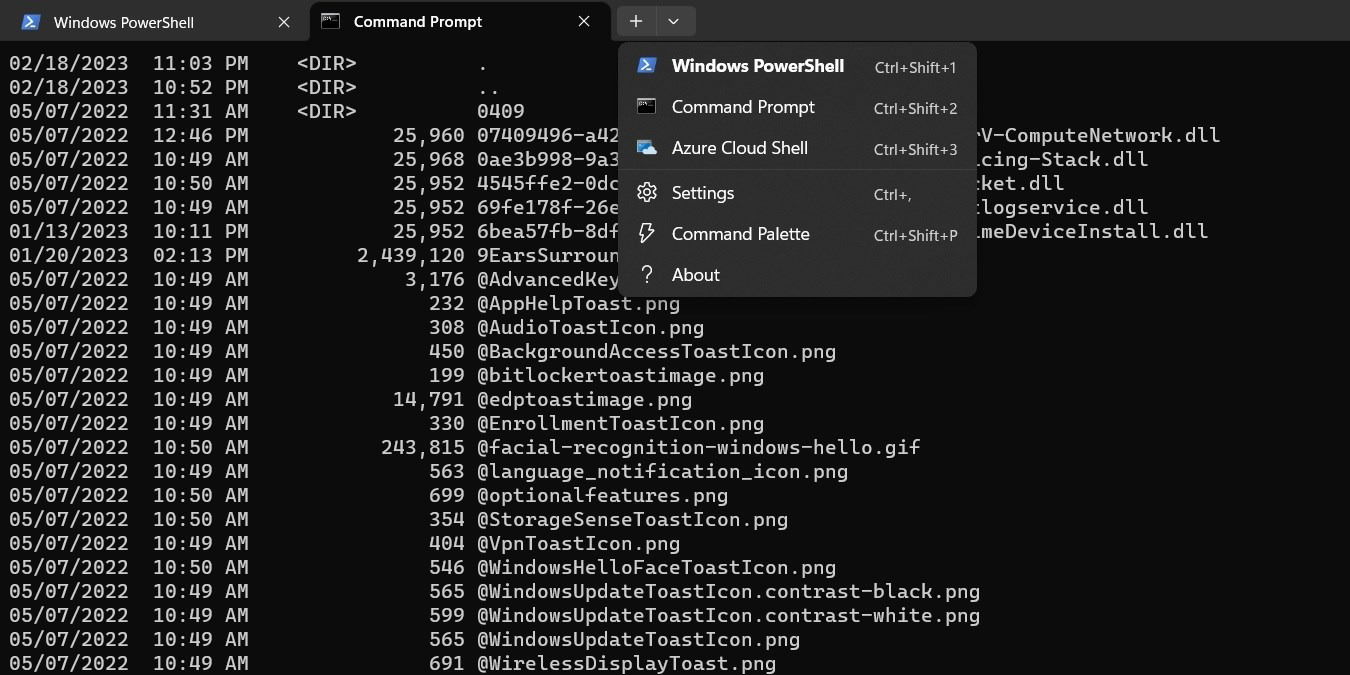
The PowerShell and Command Prompt may look similar at first glance, but there are significant differences when you compare Command Prompt vs. PowerShell. Let us get to know what PowerShell and Command Prompt are and how they differ in their roles and applications in Windows.
Tip: does Powershell keep popping up at startup? Learn what to do.
Content
- Advantages of Using the Command Line Interface in Windows
- What Is Command Prompt
- What Is PowerShell
- How Is PowerShell Different from Command Prompt
- 1. Function
- 2. Different Ways to Launch the Programs
- 3. Presence of an Integrated Scripting Environment (ISE)
- 4. Text vs. Objects in Output
- 5. Batch Commands vs. PowerShell Cmdlets
- 6. Remote Management Functionalities
- 7. Miscellaneous
- Which One to Use? PowerShell or Command Prompt?
- Frequently Asked Questions
Advantages of Using the Command Line Interface in Windows
Command line interfaces, such as Command Prompt and PowerShell, offer great benefits compared to graphical user interfaces (GUI). It’s easier and faster to open and copy files in the Command Prompt/PowerShell windows. RAM consumption is far less for daily operations. They are useful for maintaining the health of your Windows devices, such as running a system file check or DISM.exe program.
As a Windows user, you don’t have to deal with the command line interface for daily activities. For any advanced tasks, the command line provides greater flexibility and control over the task.
What Is Command Prompt
Command Prompt (also known by the filename “cmd.exe,” or simply cmd) is the oldest command line interface provided by Microsoft, starting from Windows NT (Windows NT 3.x and above). It is a simple Win32/Win64 application that can interact and talk with any Win32/Win64 objects in the Windows operating system. It generates its output in text format only.
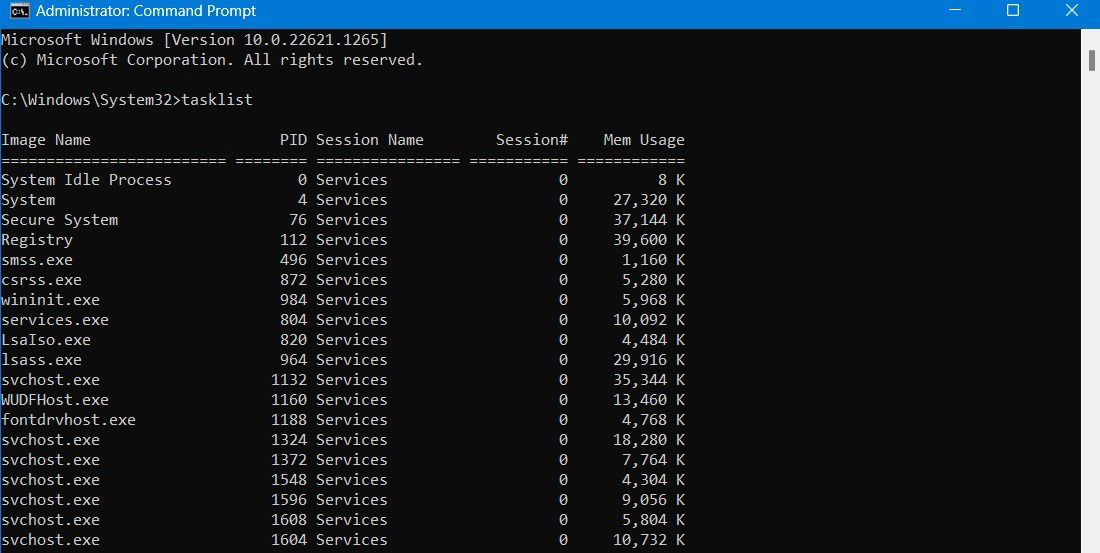
Cmd has a user-friendly command structure that is widely used to execute batch files, troubleshoot Windows problems, perform advanced actions, get information, generate task lists, and copy-paste file and folder paths. Cmd is also used to troubleshoot common Windows problems.
Tip: learn how to hide Windows updates using PowerShell.
What Is PowerShell
The first version of PowerShell, which is based on the .NET framework and more advanced than Command Prompt, was released back in 2006 and available since the launch of Windows 7. PowerShell has many different advanced features, like command piping, task automation, remote execution, Secure Shell Protocol (SSH) support, and Windows Remote Management using WS-Management functionality.
PowerShell deeply integrates with the Windows operating system while still providing an interactive command line interface and scripting language.
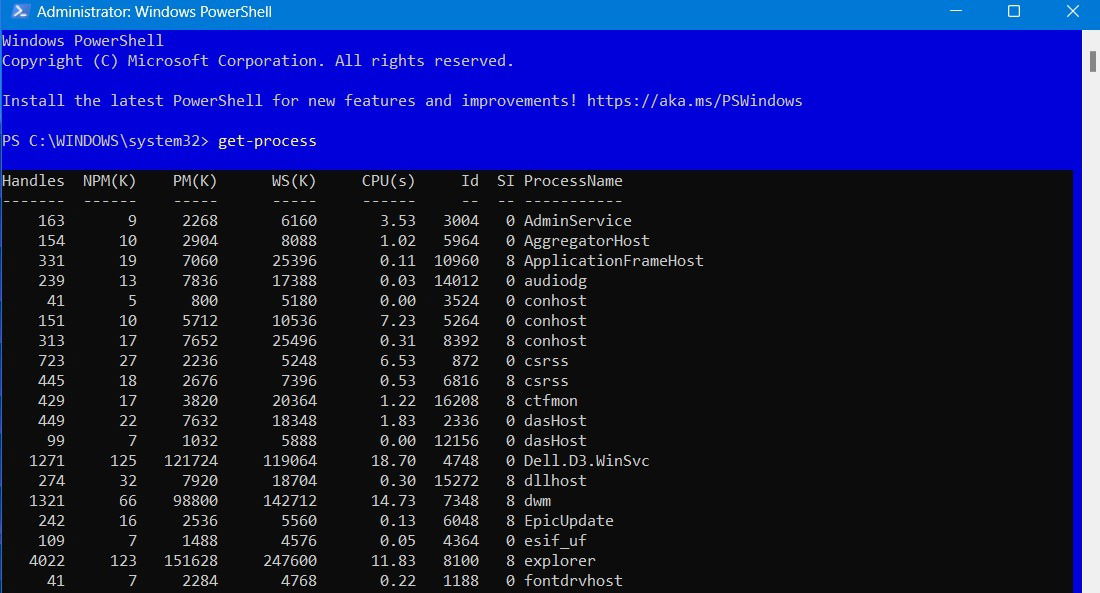
Considering the deep integration and support for the scripting language, it is often used by system administrators and IT professionals to perform task automation and configuration management.
How Is PowerShell Different from Command Prompt
Below, we take a look at the most important differences between the two applications.
1. Function
PowerShell is much more advanced in terms of features, capabilities, and inner workings when compared to the legacy Command Prompt. In fact, almost every under-the-hood module of Windows can be exposed by PowerShell, thus making it a useful tool for IT professionals, system administrators, and power users. According to Microsoft, starting with Windows 10, PowerShell has replaced Command Prompt as its default command shell for File Explorer.
2. Different Ways to Launch the Programs
You can launch PowerShell from the Start menu or Run Command, Win + R, by typing the text powershell. On the other hand, Command Prompt is launched by typing cmd.exe or cmd. For most Windows tasks and services, you will need to launch either program in Administrator mode.
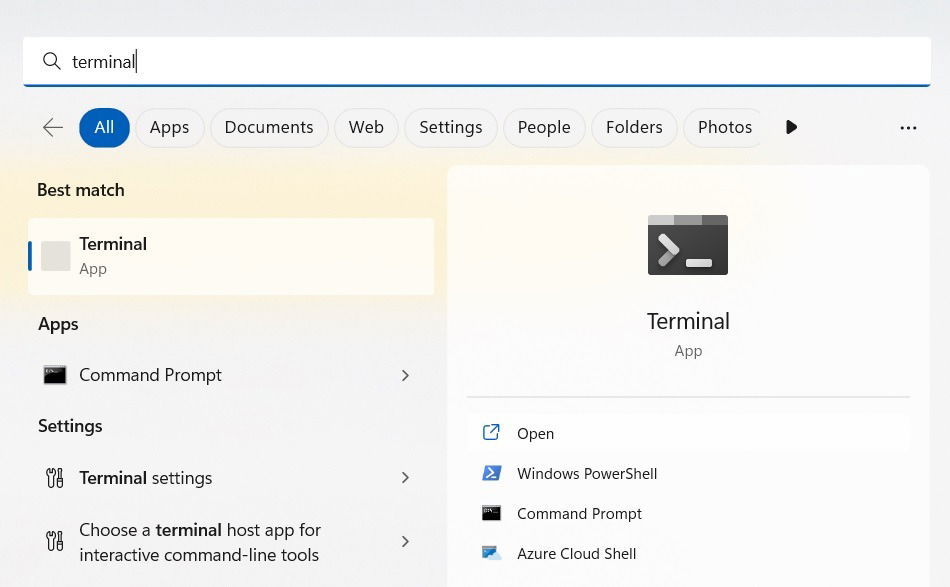
You can also launch PowerShell and Command Prompt side by side in the Windows Terminal app, the latest implementation of Microsoft’s command-line interface. Read on to learn how to customize the Terminal app in Windows.
3. Presence of an Integrated Scripting Environment (ISE)
When we say PowerShell, most think of the standard command-line interface, but Windows also comes with PowerShell ISE (Integrated Scripting Environment), which helps you create custom and complex PowerShell scripts for all kinds of works. You can test, debug, and run them just like a typical programming window. Therefore, PowerShell supports coding formats, such as syntax coloring, tab completion, and context-based commands.
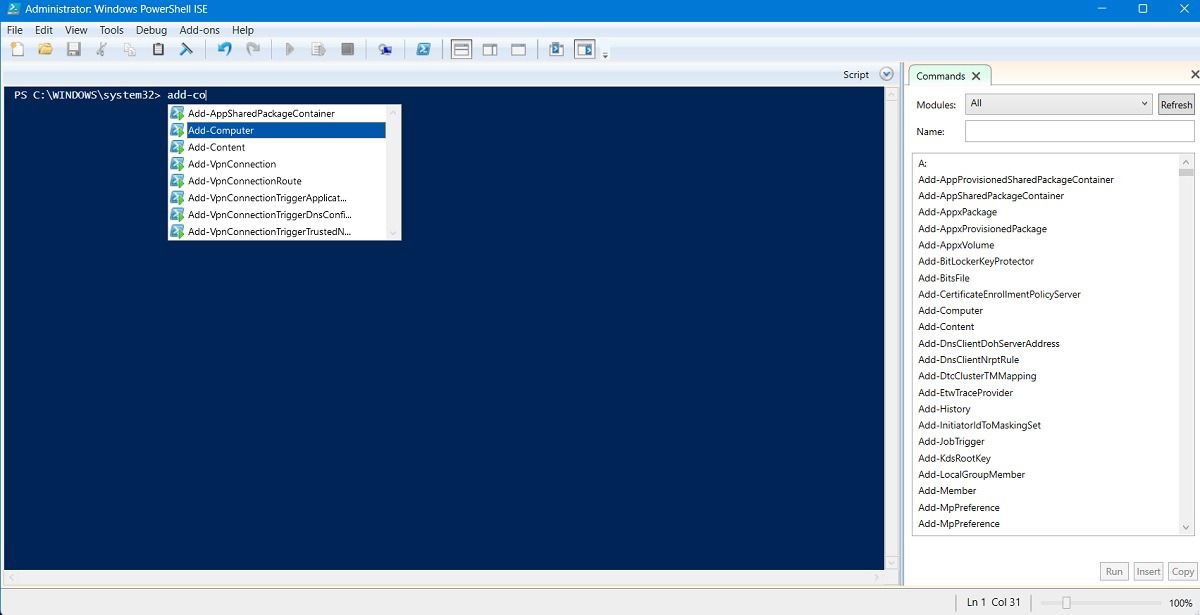
Command Prompt has limits in the edit options it allows and cannot provide a proper scripting/coding environment. Its latest versions support text selection and copy-pasting, but that wasn’t always the case.
However, Cmd features what is known as a legacy console mode in its Command Properties. It offers compatibility with many older and outdated command-line tools no longer supported in the latest Windows versions.
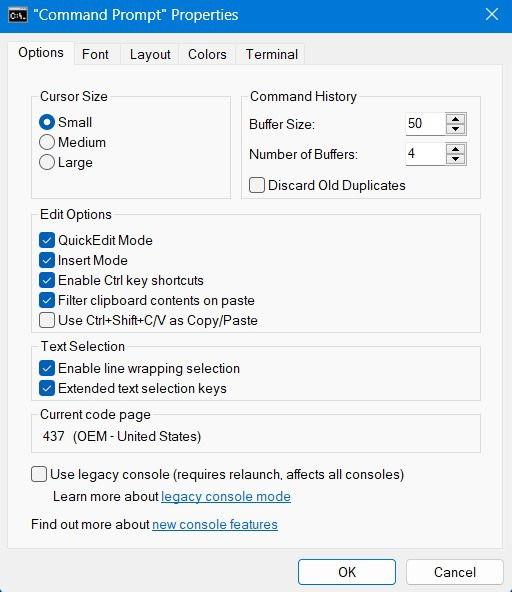
Good to know: looking for a practical plain text editor? These are the best options for Windows.
4. Text vs. Objects in Output
PowerShell uses functional commands known as cmdlets. Since the command-line tool treats all output as objects, the output can be passed as input to other cmdlets through the pipeline. This allows you to manipulate the data as much as you want without seeking the help of complex Reg expressions. This is just not possible in the Command Prompt.
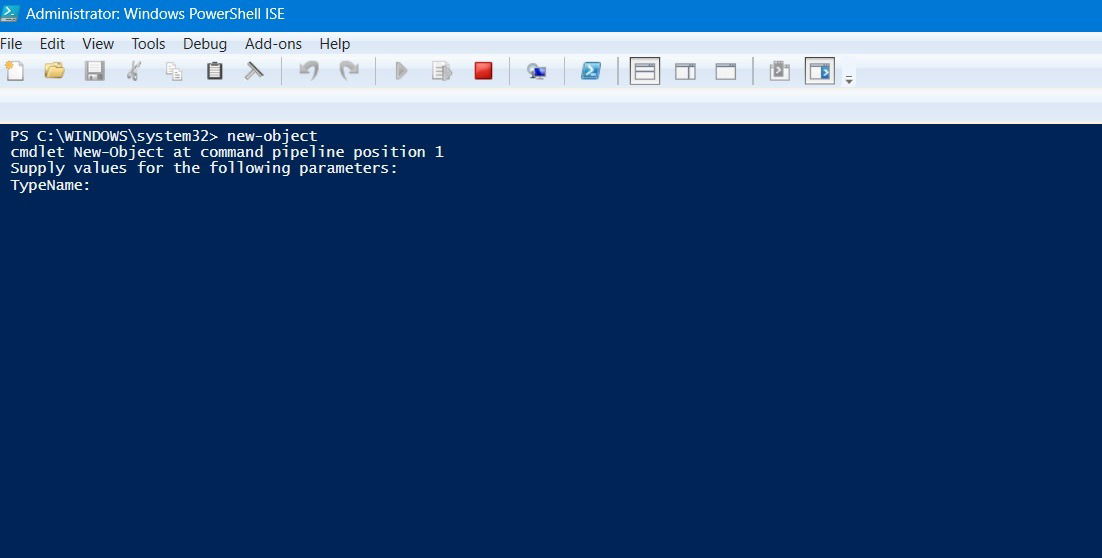
As the Command Prompt does not have these preinstalled objects, it cannot transfer its output to other commands. Instead, it treats all commands, whether input or output, as nothing but plain text variables.
5. Batch Commands vs. PowerShell Cmdlets
PowerShell cmdlets can be invoked either in the runtime environment or in automation scripts. Unlike the Command Prompt or even the *nix shell, the output generated from a cmdlet is not just a stream of text (strings) but a collection of objects.
Frequently used PowerShell cmdlets include Get-command, Set-Execution Policy, Get-Service, Get-Process, New-Object, Where-Object, Set-Alias, Debug-Process, Test-Path, andTrace-Command.
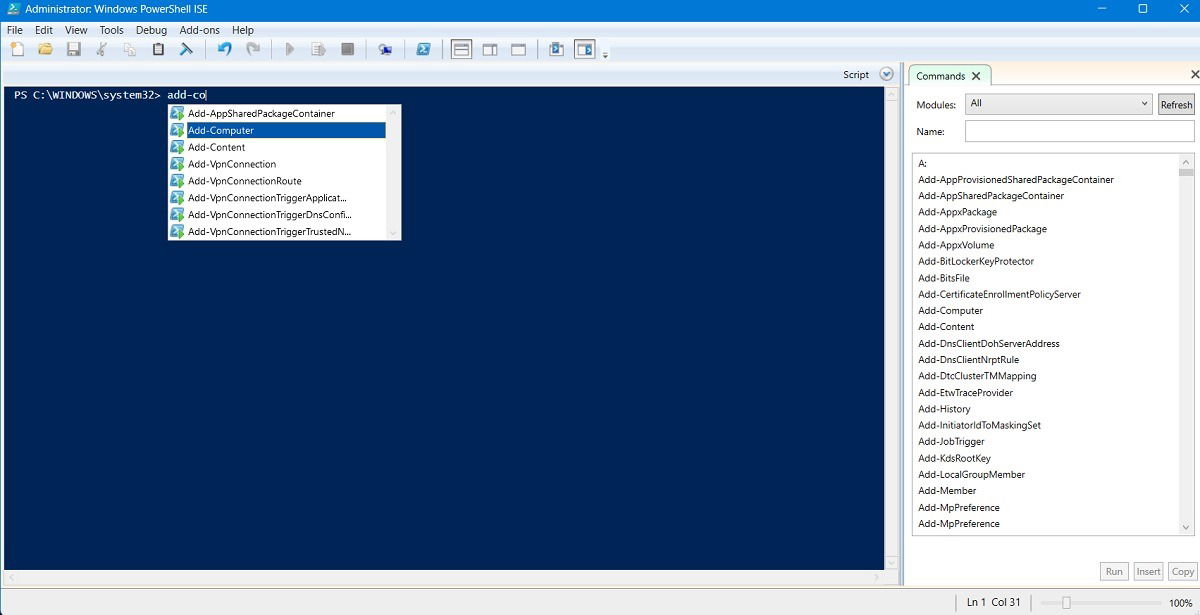
Most frequently used commands in Command Prompt also work with PowerShell, such as cd, set, dir, call, assoc, diskpart, cls, systeminfo, netstat, ping, and ipconfig. These are known as “batch” commands and can be executed equally well in both command-line software, as PowerShell itself is built around a command-line shell at its core.
6. Remote Management Functionalities
The PowerShell window can be used to run remote applications (such as by a system administrator) using a service known as Windows Remote Management, which is an implementation of the WS-Management Protocol. There are certain cmdlets, such as PSSession, that help establish the remote pairing.
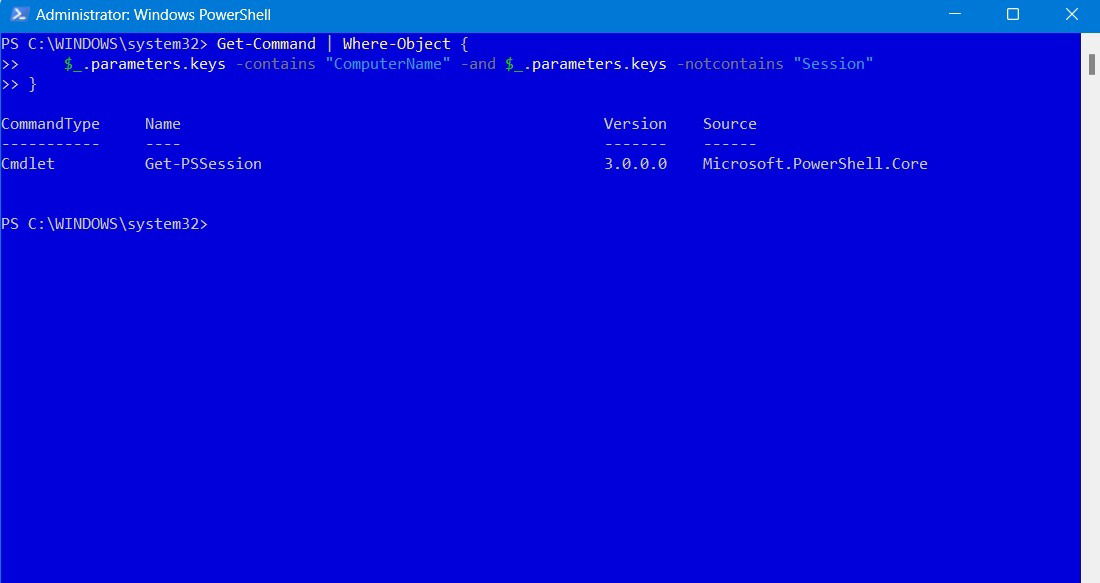
7. Miscellaneous
Among the other features you’ll find in PowerShell but not Command Prompt, the following are worth noting:
- Support for Microsoft Cloud products, such as OneDrive’s commands
- Access to programming libraries
- Help commands
Tip: you can change the Windows Terminal theme to give it a new look and feel.
Which One to Use? PowerShell or Command Prompt?
PowerShell is a more advanced implementation of command-line functionalities in Windows. When you compare all of this to the legacy Command Prompt, you will find it painfully inferior to the PowerShell in terms of both functionality and how much you can do with it.
As PowerShell executes the batch commands effortlessly, you can easily transfer Command Prompt tasks to PowerShell – yet the reverse is not true.
Of course, if you are entering into the realm of system administration, you need to learn PowerShell to make your life easier. Modern-day Windows systems often require the PowerShell window, especially its Get-series cmdlets, so there’s no escaping it if you want to manage your own device.
Tip: you can run a Java program in Command Prompt. This guide shows you how.
Frequently Asked Questions
What are the disadvantages of PowerShell?
All the power of PowerShell comes at a cost – that is the learning curve. The Command Prompt is much easier to use for simple troubleshooting and routine maintenance tasks on your device. Another disadvantage is that it can potentially invite a few security threats, especially if you are importing programs from unknown sources. If you don’t mind the steep learning curve, give PowerShell a try.
What are some useful Command Prompt tricks, hacks and codes?
Command Prompt can do many useful things, such as opening files on your PC, and there are many neat tricks and hacks that help you get deep insights into your system.
All screenshots and images by Sayak Boral.

Sayak Boral –
Staff Writer
Sayak Boral is a technology writer with over eleven years of experience working in different industries including semiconductors, IoT, enterprise IT, telecommunications OSS/BSS, and network security. He has been writing for MakeTechEasier on a wide range of technical topics including Windows, Android, Internet, Hardware Guides, Browsers, Software Tools, and Product Reviews.
Subscribe to our newsletter!
Our latest tutorials delivered straight to your inbox
Sign up for all newsletters.
By signing up, you agree to our Privacy Policy and European users agree to the data transfer policy. We will not share your data and you can unsubscribe at any time. Subscribe
1 thought on “Command Prompt vs. PowerShell: What Are the Differences?”
Comments are closed.